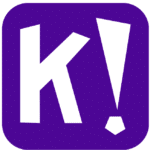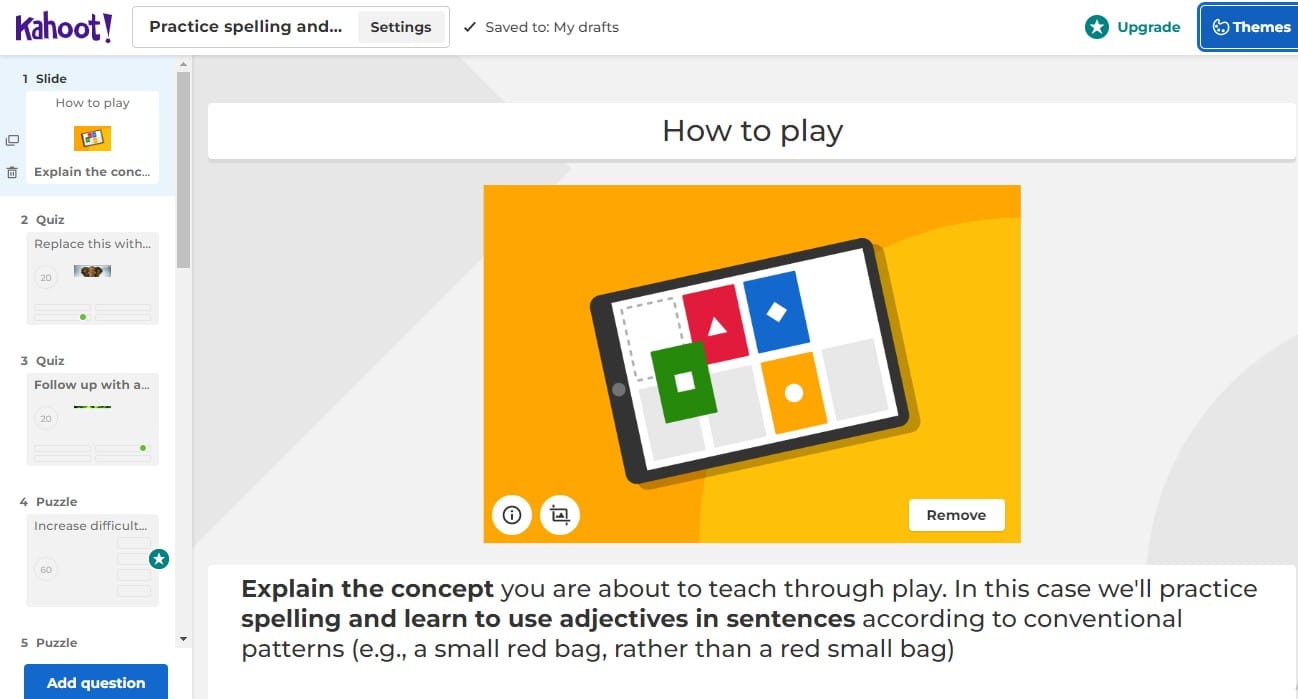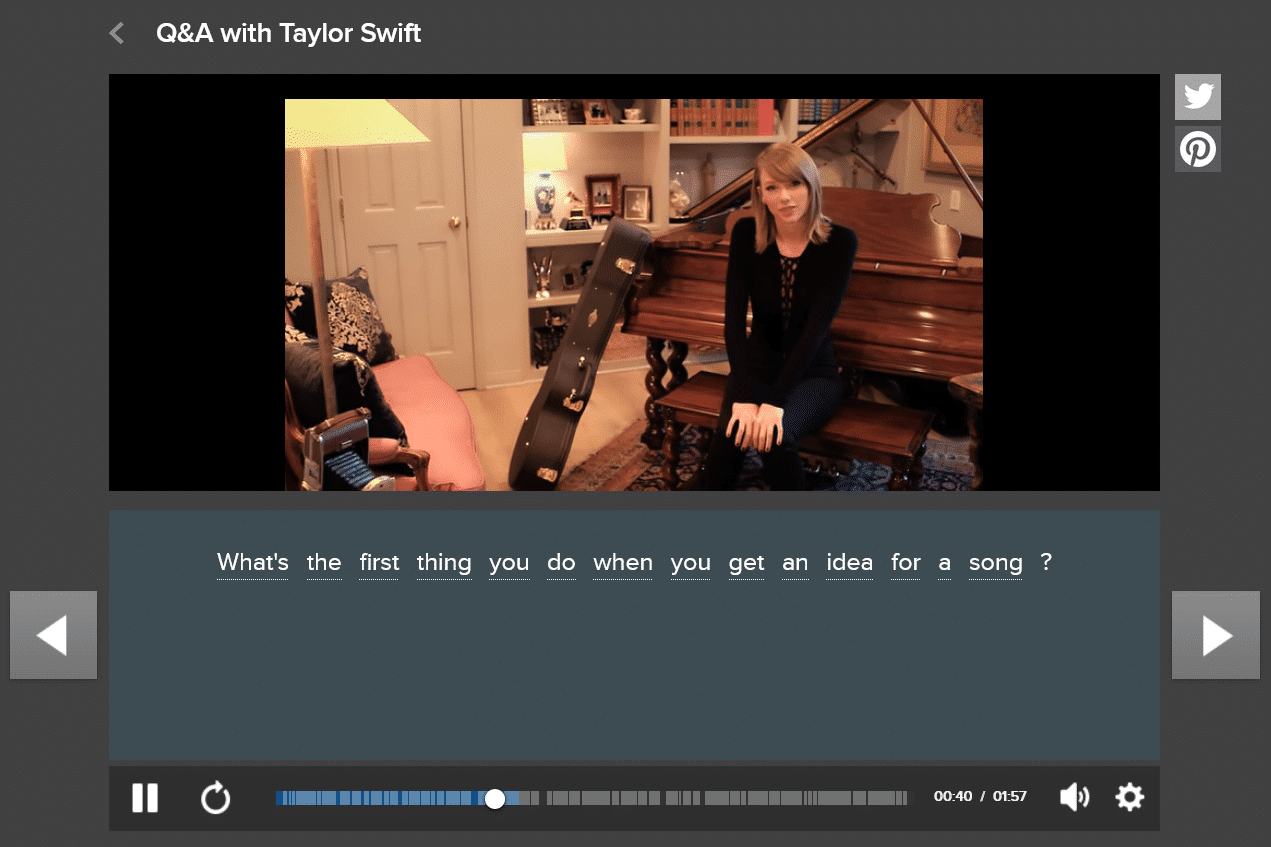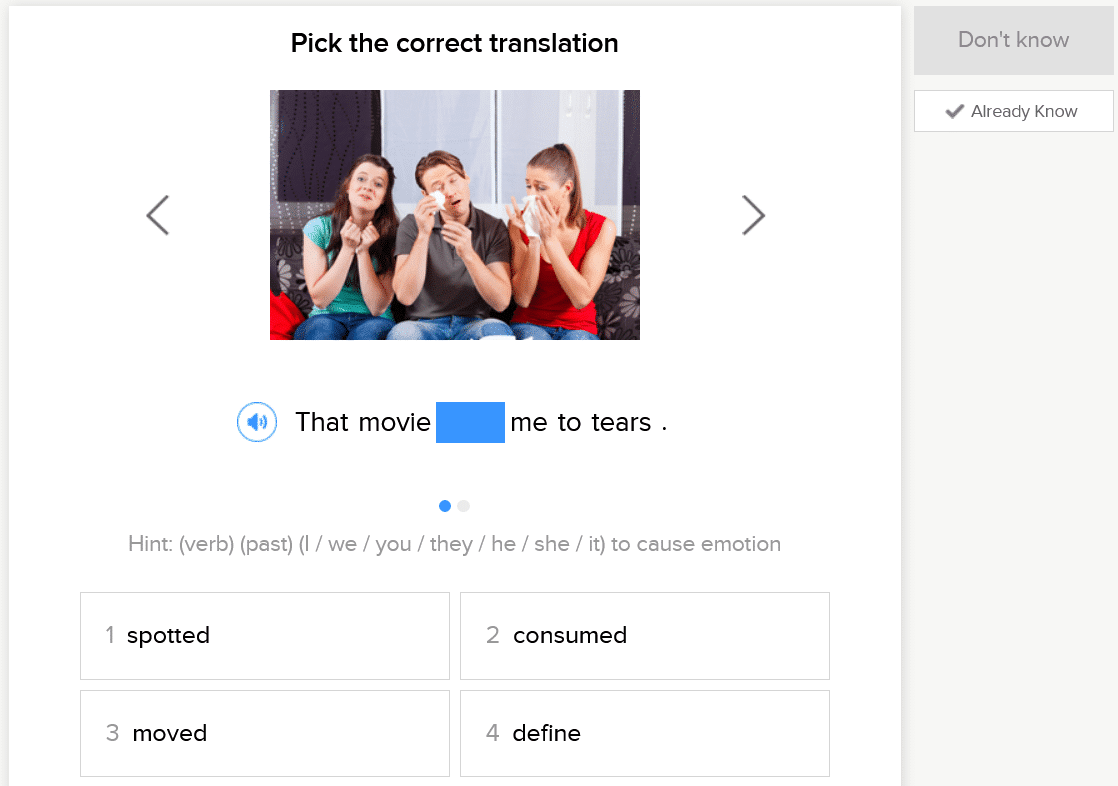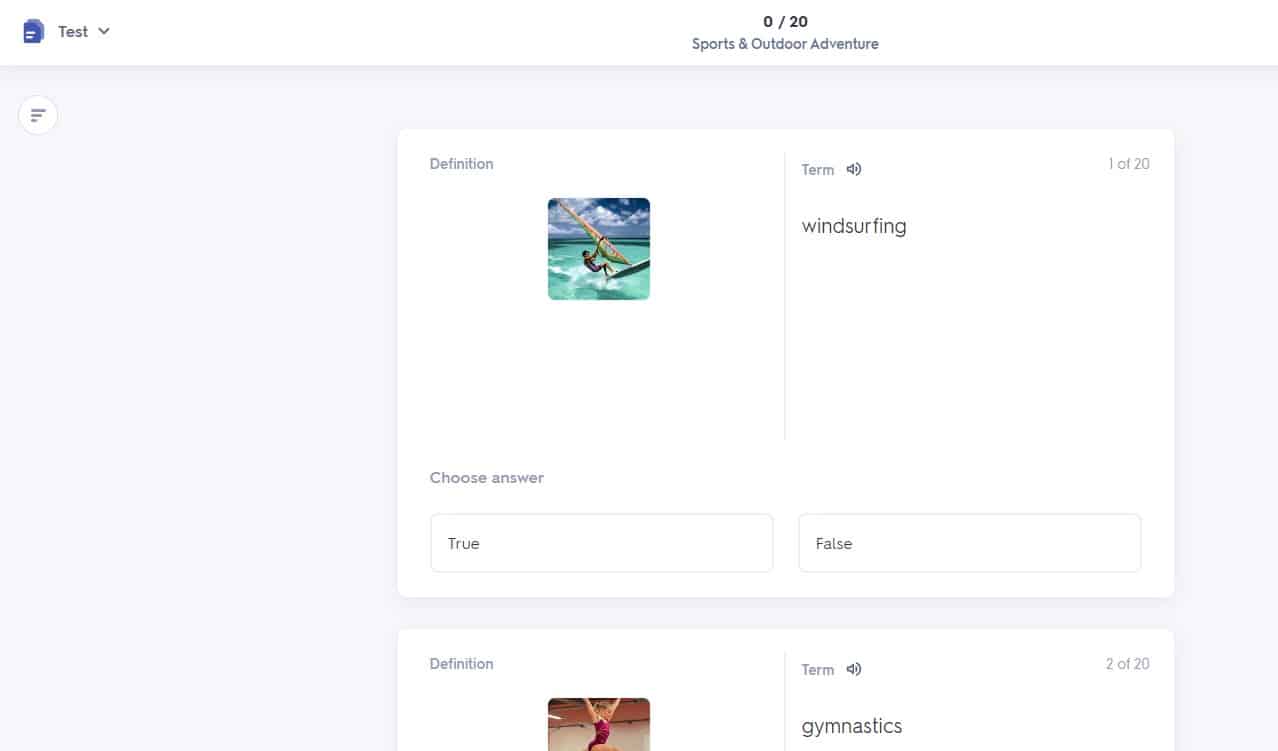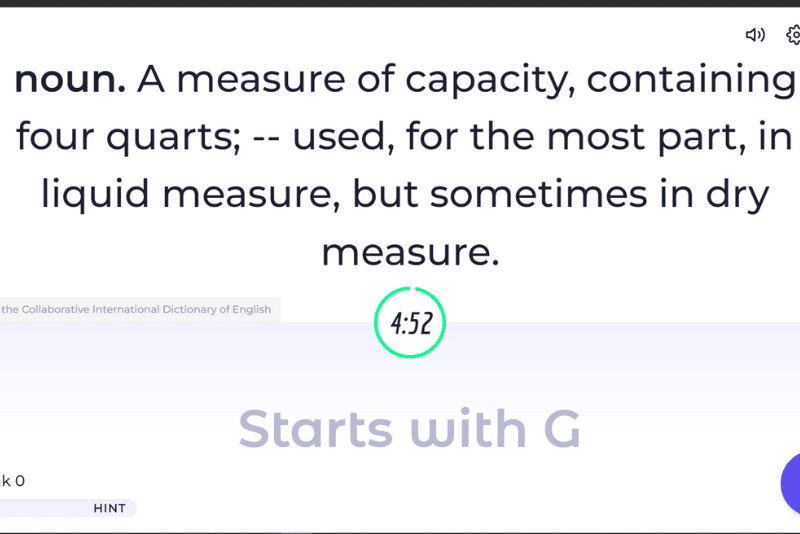
14 Creative English Activities for Teenagers
Life is pretty complicated for teenagers, even without throwing English classes into the mix.
That’s why it’s so important for English educators to keep lessons for teens engaging and motivating.
Wondering how to do that?
I’ve been an ESL teacher for many years and these are 14 of my favorite English activities to get teenage students listening and chatting in the classroom.
They’re guaranteed to keep your students excited about class!
Contents
- Online Activities
- Group Activities
- 5. Best Guessing Game: Interview with the Stars
- 6. Best for Physical Movement: Grab the Ball
- 7. Best Fun Musical Activity: Lyrics Jigsaw
- 8. Best Question and Answer Practice: I Mustache You a Question
- 9. Best for Parts of Speech: Mad Libs
- 10. Best Word Association Game: Apples to Apples
- 11. Best for Material Review: Jeopardy
- 12. Best Discussion-based Activity: Werewolf
- One-on-one Activities
Download: This blog post is available as a convenient and portable PDF that you can take anywhere. Click here to get a copy. (Download)
Online Activities
1. Best for Classroom Quizzes: Kahoot!
Level: All levels
Focus: Vocabulary, spelling, grammar and review
Price: Limited free version available, paid plans from $19/month
In a nutshell, Kahoot! is a program for creating quizzes to play learning games with your class.
To get started with this addictive game, I recommend signing up and exploring the platform a little bit. This will allow you to get familiar with the layout of the site and practice creating your own Kahoot! quiz.
You can also choose from a massive selection of pre-made quizzes to make your lesson planning a little easier. However, I personally love to create my own quizzes because you can add images and videos, and make them more relevant to what your students are currently learning.
The Kahoot! experience is very similar to a fully personalized game show. After setting up the screen if you’re doing a live class or joining a video conference with the students, the teacher (or game show host, if you will) presents the game on their screen.
Students see the questions on the teacher’s screen, then enter their answers on their devices, using a PIN code that connects them to the game session. Scores are then tallied in real-time on the teacher’s game show screen.
By concluding the class with a game of Kahoot! I can summarize the lesson, finish on a fun note and reward good behavior.
2. Best for Authentic Content: FluentU
Level: All levels
Focus: Vocabulary and listening comprehension
Price: $299 per year for a minimum of 10 users (teachers and students)
The FluentU program includes quizzes, flashcards, a robust video library and more—all based on authentic video content. That means students can learn with English-language vlogs, movie clips, trailers, funny commercials and more.
To use FluentU for teenage learners, I recommend browsing the video library for content you know your adolescent or younger students would enjoy. You can do this by keeping an ear to the ground to stay up to date with the latest YouTubers, video games and films that they’re interested in.
You can assign specific videos or flashcard decks for your students to study, and can track their progress. Or you can let them choose the content that interests them and allow for a completely self-guided learning experience.
Every word is clearly defined, so all students have to do is hover their mouse over a word (or tap, on mobile devices) to get a definition, memorable image, example sentences and part of speech.
If they want to study the word later, they can add it to their vocab list right from the video player. After each video, students are tested on their understanding of key words from the content they just watched.
The best part of this kind of video learning is that it’s addictive: Students can easily go down the rabbit hole of content. All videos are followed by additional recommendations, so it’s easy to click from one video to another.
Videos can also be filtered by level, type and topic, making it easy to consume the kind of content that interests each individual student.
Finally, each vocabulary word (or phrase) has video examples of it in use—so if they want to see the word in use in another context, they can easily hop over to the next video that features it.
3. Best for Digital Flashcards: Quizlet
Level: All levels
Focus: Vocabulary building
Price: $35.99 per year with 30-day free trial
Flashcards are undoubtedly one of the most popular and trusted methods of learning vocabulary in another language.
They’re like bread and butter for an ESL teacher and can be a fantastic tool to introduce and summarize English vocabulary, grammar rules and more.
On the Quizlet website, learning with flashcards is relatively straightforward. After signing up, you’ll have access to millions of flashcard “packs,” which are pre-made and cover the standard subject areas in a high school curriculum.
Be aware, however, that these flashcards are user-made and answers should be thoroughly checked before you share the quizzes with your students. Of course, you also have the option of creating your own flashcards to target particular learning areas.
In addition, you can tweak the flashcards to make them more teenage or kid-friendly and save your packs for later use. One way you might do this is by creating packs on video game vocabulary or YouTube phrases, for example.
You can also set up a Quizlet live game, which is similar to Kahoot!, discussed above.
After creating your custom flashcard deck, you can invite your students to a round of Quizlet to add a little bit of competition to the classroom. I’ve found this to be an excellent motivator, and it can really help bring students out of their shells.
4. Best for Vocabulary Definitions: Knoword
Level: Intermediate to advanced
Focus: Vocabulary building and word definitions
Price: Free for a basic account, $45 per year for a pro account
I promise you one thing: Once your students start playing Knoword, it’ll be nearly impossible to get them to stop.
The strength of the online game Knoword lies in its simplicity. Students can get started with this game almost immediately and practice their reading, vocabulary and spelling.
Basically, the program will provide random word definitions and students must type the missing words as quickly as possible.
To use this game for teenage learners, I recommend that you give them a class code and pit students against each other for some healthy competition. You’ll also have the option to assign individual tasks and track the student’s progress.
Similar to Quizlet above, there are many pre-existing packs based on the school subject or you can play the main vocabulary definition game. You can also create your own customizable learning packs should you want to test your students on a specific area or make the coolest exam ever.
The main vocabulary game can be challenging, which is why this is recommended for intermediate students and above.
Group Activities
5. Best Guessing Game: Interview with the Stars
Level: Intermediate and up
Focus: Speaking and question forming
I’m always on the lookout for new twists on classic ESL games to give students an activity they haven’t done before. This game is somewhat similar to the popular game “20 Questions,” only with a few slight changes, making it extra fun.
The teacher will put the names of famous people or characters into a container. These names can be real, fictional cartoons or any characters you can think of (as long as the students know who it is).
Students will then draw out names and must assume the character. Instruct the students to answer the questions as if they were really that person or character.
If you’re teaching a lower-level class, you can model with an example and write some sample questions on the board to prompt the students. You can also do the question and answer one by one by having students come up to the front of the class one at a time.
If the students are slightly more advanced, I like to do a kind of “cocktail party” style approach where the students will mingle throughout the room and ask each other questions. Just make sure you move around the classroom and check that the students are practicing their English.
At the end of the party, students can do a vote-style assessment of who they think each of their fellow classmates is.
6. Best for Physical Movement: Grab the Ball
Level: Beginner and up
Focus: Listening
If I had to choose one “tool” for the rest of my ESL teaching career, it’d have to be a ball.
From introductory activities to summary games, you can incorporate a ball into almost any activity. Plus, I’m a big believer in action and movement in an ESL classroom.
For this group game, you’ll need a ball (or several) and some space. This game works great outdoors in a big open grassy area.
After placing the students into groups, they’ll then be equally spaced away from the ball in two teams. Of course, you can also play one-on-one, depending on the amount of space and number of balls you have!
The teacher will make a true or false statement. This statement can be an English-related statement, such as the word happy is an adjective or a statement related to skills you have been teaching in class.
If the statement is true, the students must rush to grab the ball before their classmates, but if it’s false, they must leave it be. Students or teams will receive a point every time they correctly snatch the ball before the others on the true statement. However, they’ll lose a point if they grab the ball on a false statement.
For a smaller (and possibly safer) version, you can play at the student’s desks with a small ball or object to snatch.
7. Best Fun Musical Activity: Lyrics Jigsaw
Level: Beginner and up
Focus: Listening, language structure and team collaboration
This is a go-to activity to create a fun atmosphere in the classroom. That being said, it does require a little bit of preparation.
Start by choosing some popular songs with clear singing and simple lyrics. Contemporary music and pop songs are always good choices, especially songs that your students might have heard before.
Next, print the lyrics on either one large page or smaller pages, depending on the size of the class. The next step is to cut the lyrics into lines and mix them up before handing them to your class or groups.
Inform the students that they’ll be putting the lyrics back together again in the correct order. You can also turn the activity into a competition to see who can put the “jigsaw” together the fastest.
What I especially like about the game is when the students catch themselves singing along to the lyrics. It’s like a sudden realization that they know more English than they think!
8. Best Question and Answer Practice: I Mustache You a Question
Level: Beginner and up
Focus: Speaking and listening
For this activity, all you need is a stick, some paper, pens and chatty students.
After cutting out a mustache and taping or pasting it to a stick, have the students pass the mustache around until you say stop (or play music and pause it to stop). Whoever’s holding the mustache under their nose gets to ask the class a question. Students take turns answering and then passing around the mustache.
Questions can be as simple as “What’s your favorite color?” or as complex as ethical debate prompts. You can write a few sample questions on the board to get things going.
If your class is usually shy, you can introduce this activity the day before and have them prep some questions as homework.
Of course, you can replace the mustache with any item if you’d prefer students to just hold an item in their hands rather than putting it up to their faces. Grab a ball from the “Grab the Ball” activity, for instance, and pass it around!
If your students aspire to travel the world or move to an English-speaking country, this is a fantastic way to practice listening comprehension and asking/responding to questions.
This game can sharpen communication skills, preparing students for a job interview or coffee with an English-speaking friend.
9. Best for Parts of Speech: Mad Libs
Level: Lower intermediate and up
Focus: Writing, listening and speaking
If you ever had a ton of fun with “Mad Libs” around a campfire, why not share that fun with your ESL students? This game tests their knowledge of grammar and parts of speech, and the results are hilarious.
Here’s how it works: Each “Mad Libs” story has blank words for you to fill in, usually parts of speech (you’ll be choosing nouns, adjectives, emotions, places, etc.) and you only get to read the full story after you’ve picked your words.
Writing.com has pages upon pages of “Mad Libs” puzzles that are great for teens. Or, if you’re tech-savvy, you can download an app onto your classroom device. The official “Mad Libs” app can be found on the Apple store.
Then just sit down with your students and go around the table asking for nouns, verbs, adjectives and more. For ways to get your students more involved, have them write the words down themselves or spell them out for you.
With more advanced students, you can even encourage them to write their own stories, then remove a certain number of words for their classmates to fill in.
Once your students get into it, they might start cracking up with the hilarious stories that come up!
10. Best Word Association Game: Apples to Apples
Level: Lower intermediate and up
Focus: Reading, speaking
This game is a great way to go more in-depth with parts of speech by doing word association using adjectives. And you can either buy your own box online or you can make your own cards that focus on the vocabulary you’ve been teaching in class. Genius!
You’ll want a group of three or more students to play this game with. Cards are split into two types: green for adjectives and red for nouns. Students get seven red cards and then one green card is put into the middle by the “judge,” who rotates each round.
Students then choose a red card from their hand that they feel fits the green card best, and place it face-down on the table. Once everyone’s made a choice, the judge reads all the cards out loud and decides which is the best of the bunch.
The winner of that round gets to keep the green card. Whoever has the most green cards at the end of the game is the winner.
You can mix “Apples to Apples” up a bit by playing opposites (they put in the card that least fits the adjective) or change things up completely by giving them several green adjective cards and one red noun card with the objective of matching a variety of adjectives to that noun.
“Apples to Apples” can also be a great way to get your more advanced speakers debating. For example, go around the table and ask whether the students agree with the winning card that the judge picked, or justify their own card choice for that turn.
11. Best for Material Review: Jeopardy
Level: Lower intermediate and up
Focus: Listening, speaking
It was the first day of classes, and I’d gotten my first group of teenagers. Our books hadn’t yet arrived. What did I do? I came up with a “Jeopardy” board.
As I found out, “Jeopardy” is a great way to review old information that may have been tucked away during the summer. Besides this, it’s also a great way to check student comprehension in a fun way.
Not to mention that the possibilities for quiz categories are endless. Some “Jeopardy” categories you might use include US vs. UK English, the present tense or superlatives. It’s a game that is easily customizable based on your classroom needs.
You can go into easier categories for lower students or harder ones to really challenge your advanced class.
There are several ways you can make this game, including both analog and digital versions. If you’d like more tips on how to create your own “Jeopardy” game for your classroom, check out our more in-depth instructions here.
For websites that have pre-made digital “Jeopardy” templates which also allow you to make your own, you can also check out Factile and JeopardyLabs.
12. Best Discussion-based Activity: Werewolf
Level: Advanced
Focus: Speaking, listening
The party game Werewolf gives a twist on your everyday role-playing exercise with a focus on discussion. Your teens will have to focus on banding together to either beat the Werewolf or outsmart all the others.
There are different variations of this role-playing game, but the most basic one has one moderator (in this case, the teacher) and a werewolf, while the rest of the players are villagers.
Werewolf has “daytime” and “nighttime” phases. During the nighttime phase, everyone closes their eyes. The moderator asks the player with the werewolf role to open their eyes. The werewolf silently selects a villager to “kill” by pointing, then closes their eyes. No talking is allowed during this phase!
Once a villager has been selected, the moderator begins the daytime phase by asking everyone to open their eyes. The moderator now spins a tale about a werewolf attack in the night, and announces which villager has been “killed.”
Students must now discuss who they think the werewolf is, while the person with the werewolf role must try to throw attention away from themselves. This phase requires some smooth talking skills and clear communication!
At the end of the discussion phase, the villagers eliminate one player, who they think is the werewolf. If they’re wrong, the game continues for another round. If they’re right, the game ends.
One-on-one Activities
13. Best for Vocabulary and Spelling: Board Games
Level: All
Focus: Speaking, reading, listening
There are tons of board games you can play one-on-one with teenage students. They’re great for sparking English communication in a fun environment.
- “Guess Who” is perfect for those who are learning to talk about features and characteristics. You can even go beyond how a person looks and work on what a person does. For example, you could print out a page of people in their work environments and your student can ask, “Do they wear a uniform?”
- “Scrabble” is also a classic game that teens enjoy. You can use the game to focus on vocabulary and spelling. If you get bored playing the old-fashioned way, you can tweak the rules. For example, allowing your student to choose one letter in any word on the board can be a fun way to get them thinking outside the box.
- For more vocabulary, you can always play “Word Battleship.” The gameplay is the same as regular “Battleship,” except instead of using boats you use letters to form words. It’s a great way to review words and focus on spelling, especially when the student is making their own board.
14. Best for Creative Writing: Person, Place, Action
Level: Lower intermediate and up
Focus: Writing and reading
A lot of teenage students really dislike writing. However, some are more enthusiastic about the idea if you give them the freedom to write what they want.
While the list of possibilities for creative writing exercises can seem endless, one of my favorite games that my private students really enjoy is called “Person, Place, Action.”
The student is given nine pieces of paper. On three of them, they write a person, on another three they write a place and on the final three they write some sort of action.
These can vary from short answers to long answers. Lower intermediate students could write “runs a race” for one of their actions, while a more advanced student could elaborate with “runs a race through the desert during the hottest day on record.”
These sheets of paper are then folded and sorted into their categories, and then the student picks one from each category. The student then unfolds their paper and writes a story with the given prompt.
I generally join in with writing on nine slips of paper with my student to give them more variety, and you can get some pretty wacky results with a little bit of brainstorming.
These activities are sure to inspire your students to love the English language and encourage them to strive for fluency. They won’t even realize all the learning they’re doing while having so much fun!
Download: This blog post is available as a convenient and portable PDF that you can take anywhere. Click here to get a copy. (Download)
